The Honest Truth About Chunky Knit Blankets (And How Not to Ruin Yours)
I’ll never forget the first time I handled pure wool roving. It wasn’t yarn, not really. It was this thick, cloud-soft rope of unspun wool that felt like it could fall apart if you just looked at it wrong. My first thought was, “This is way too delicate.” My second was, “I have to make something with this.” That was a long time ago, and since then, I’ve made more chunky blankets than I can count and learned a whole lot about what makes them so magical—and what makes them so challenging.
In this article
These blankets are way more than just a cozy trend you see online. They’re a unique textile with very specific needs. Honestly, understanding what you’re getting into, from the fiber itself to how you clean it, is the key to owning a blanket you’ll love for years instead of a pilled-up mess you regret buying. Think of it less as a simple purchase and more as an investment in a piece of functional art.

So, let’s get into what that really means.
All About the Fluff: Choosing Your Material
The heart and soul of a chunky blanket is its material. Most aren’t made from traditional, twisted yarn. They’re crafted from something called wool roving, which is a bundle of wool fibers that have been cleaned and aligned but never twisted. This lack of twist is what gives the blanket its signature puffiness and incredible softness. It’s also, by the way, the source of its biggest headaches.
Why Wool is So Warm
Wool is basically a miracle of natural engineering. Each fiber has a natural crimp or wave to it, which creates millions of tiny air pockets. Since air is a terrible conductor of heat, these pockets trap your own body heat, creating an amazing layer of insulation. Chunky knits just take this concept to the extreme with their huge stitches, trapping big pockets of air for maximum warmth without feeling heavy. You feel insulated, not squashed.
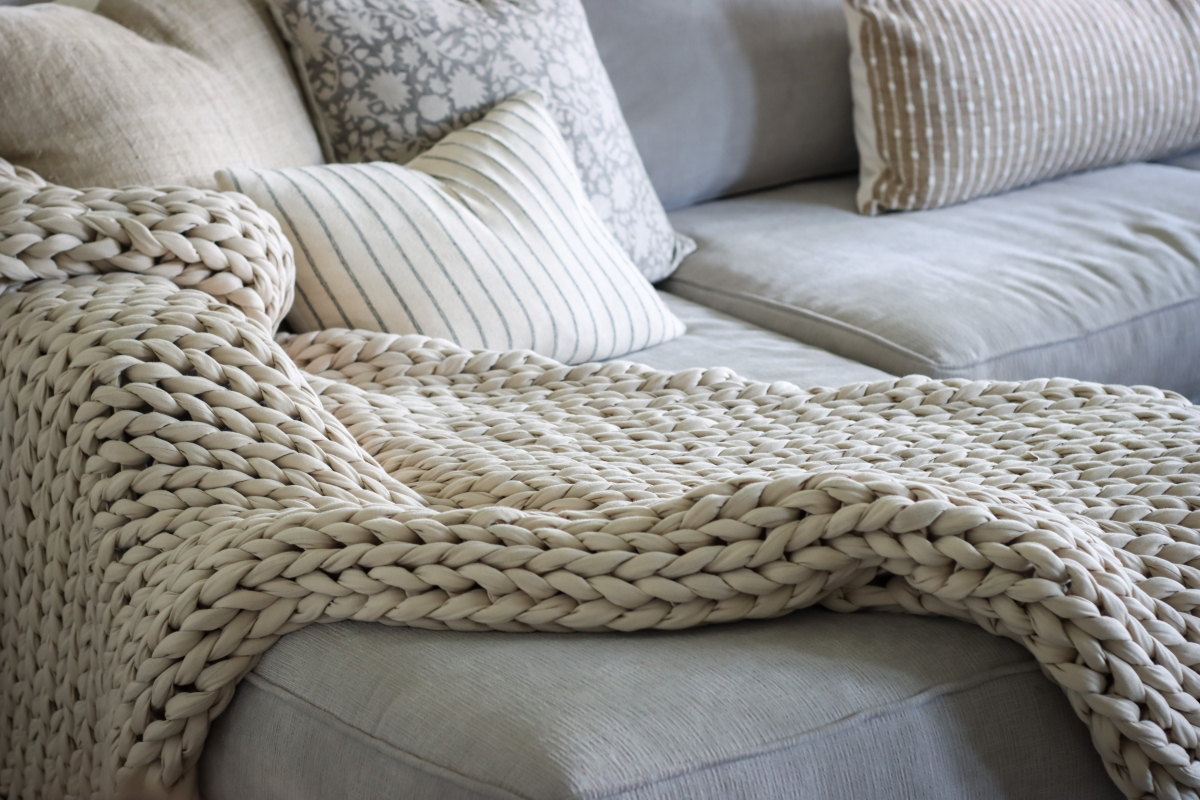
The Big Three: Comparing Your Fiber Options
When it comes to the actual fiber, you’ve got choices. Each one has a different feel, price tag, and set of rules for care. I’ve worked with them all, and while I have my favorite, I get why people choose differently.
- Merino Wool: This is the gold standard, the luxury choice. It comes from a specific breed of sheep and its fibers are incredibly fine, which is why it feels buttery-soft and not at all scratchy. For DIY-ers, expect to pay a premium for this stuff—quality Merino roving usually runs between $22 and $30 per pound from specialty online shops or fiber farms on Etsy. Because it’s so delicate, it’s the most prone to pilling and needs the most careful handling.
- Other Wools (like Corriedale): Think of this as the sturdy workhorse. Wools from other breeds like Corriedale are a bit more robust. The fibers are thicker, so it’s not quite as cloud-like as Merino, but it’s significantly more durable and less likely to pill. It’s a fantastic, slightly more affordable option if you want a natural fiber that can handle a bit more life.
- Synthetic Fibers (Acrylic/Polyester): This is your budget and allergy-friendly option. You can find giant skeins of acrylic “roving” at big-box craft stores for a fraction of the price of wool. The upsides are huge: it’s hypoallergenic, way cheaper, and generally machine washable (though the blanket can still get stretched out). The downside? It just doesn’t feel the same. It lacks the breathable warmth and satisfying weight of real wool and can sometimes feel a bit plasticky. If cost or allergies are your main concern, it’s a perfectly valid choice. But for the true sensory experience, wool is where it’s at.
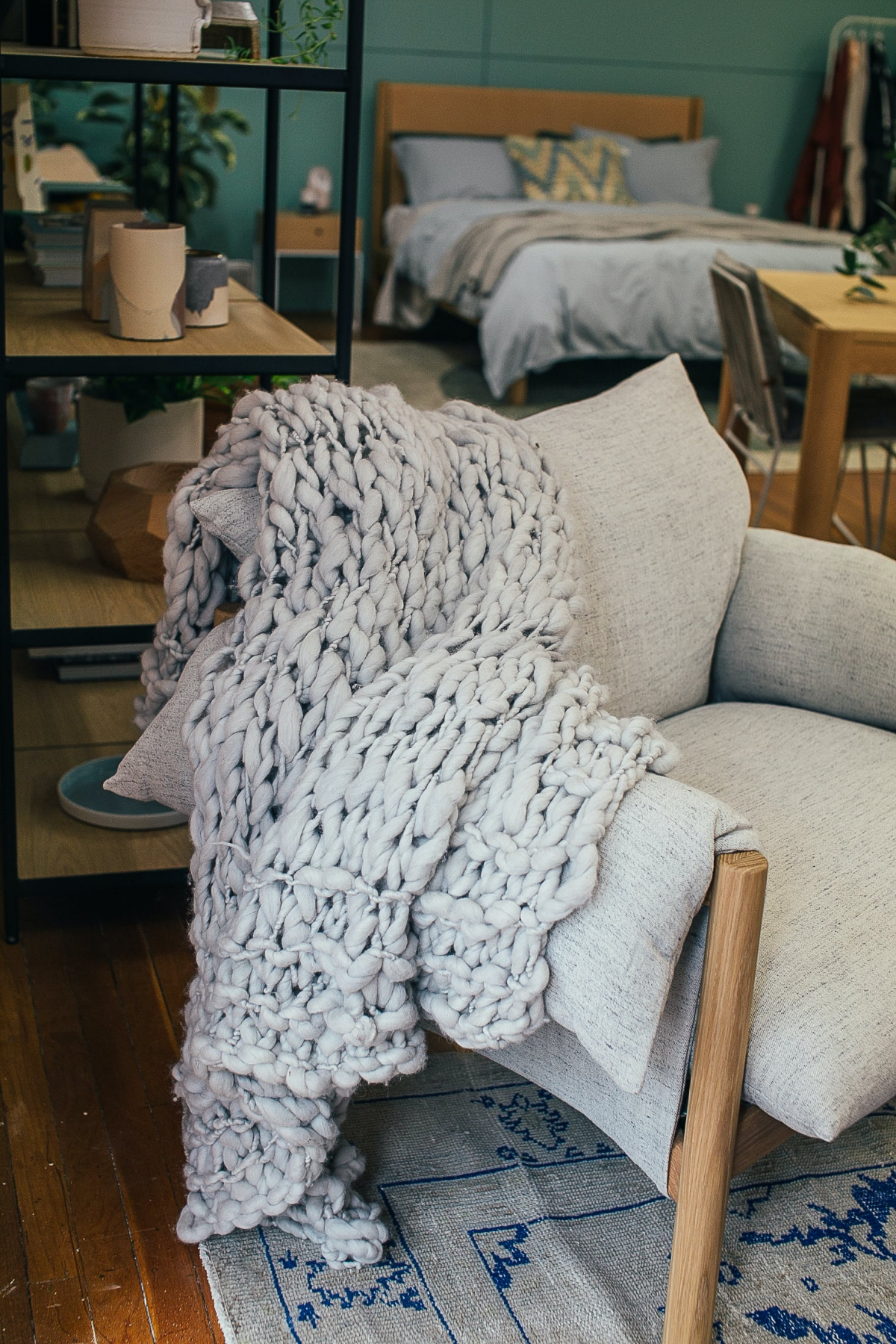
Getting Your Hands Dirty: Pro Knitting Techniques
Making one of these blankets is a surprisingly physical process. It takes more than just knowing the knit stitch; it’s about consistency and understanding how this weird, untwisted fiber behaves on a massive scale.
The Tools: Arms vs. Giant Needles
You’ve probably seen the videos of people arm knitting. It’s a totally legit technique, and it’s great for creating those huge, loose stitches with unspun roving. The challenge? Keeping your tension even. Your arms aren’t perfect cylinders, so it takes a lot of practice to keep the stitches a consistent size.
For a more controlled look, I often use giant knitting needles—we’re talking 40mm or even 50mm in diameter, usually made from lightweight wood or even PVC pipe. You can snag a pair online for about $20 to $40. Needles give you way more control, which is essential if you want to try a pattern like a cable stitch. Plus, they’re a lot easier on your back and shoulders over a long knitting session.
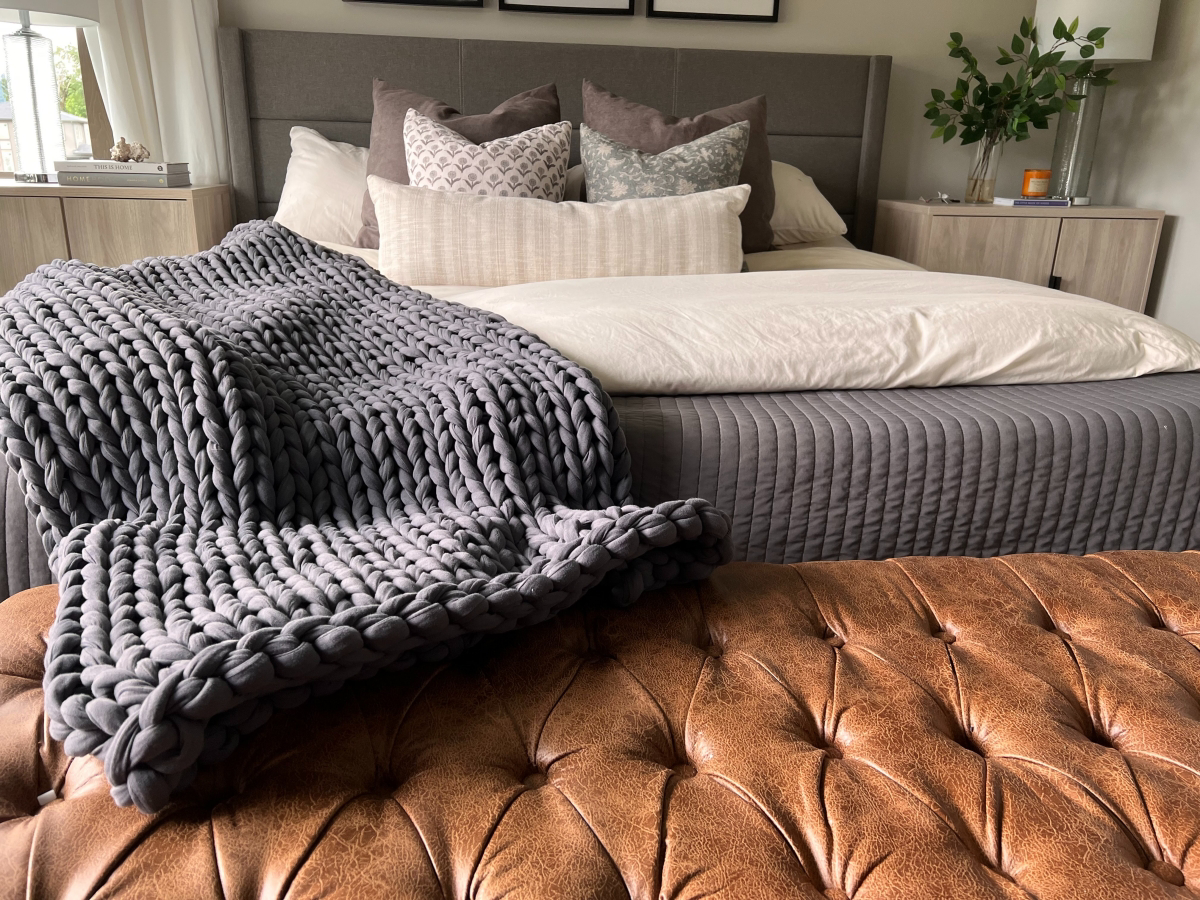
Secrets from the Workshop
A few key techniques are what separate a homemade-looking blanket from a professional one.
Joining a New Ball of Roving: You can’t just tie a knot; it would be a huge, ugly lump. The pro method is a felted join. It sounds complicated, but it’s not. Here’s how:
- First, take the end of your old roving and the start of your new one. Tease the fibers out at each end, thinning them by about half for a few inches.
- Overlap these two thinned-out ends.
- Now, add ONE drop of gentle soap (like dish soap) and a small splash of warm water right on the join.
- Rub the wet, soapy section vigorously between your palms, like you’re trying to start a fire with sticks. The friction, heat, and moisture will cause the wool fibers to lock together.
The result is a strong, seamless join that’s almost invisible. This trick alone is a game-changer.
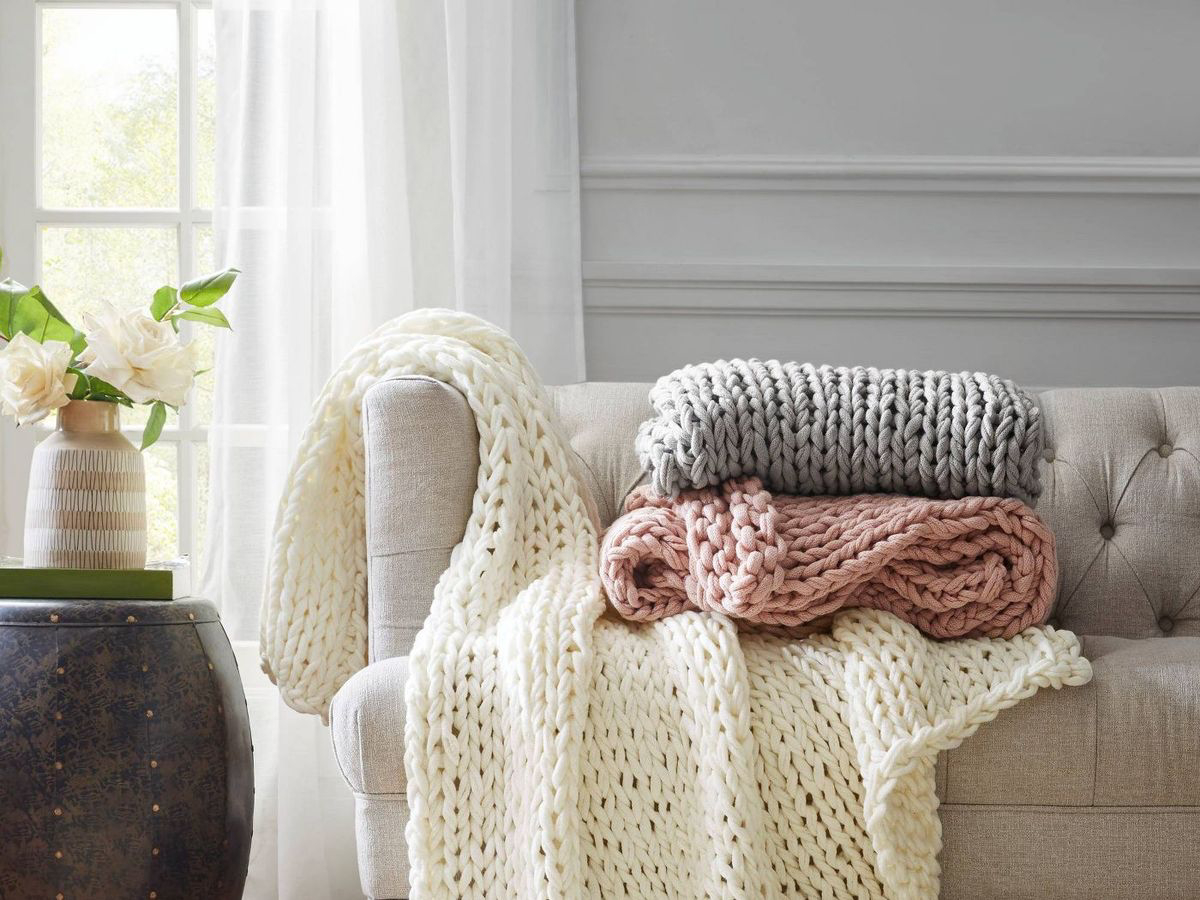
Casting On & Off: Your first and last rows MUST be loose. If they’re too tight, the edges will curl in and the blanket will look like a weird trapezoid. When you cast on, make sure it’s floppy and relaxed. When you cast off, don’t pull the working strand tight after you pass a stitch over. Let it have plenty of slack to match the stretchiness of the rest of the blanket.
Planning Your DIY Project: The Nitty-Gritty
Okay, so you want to make your own? Awesome. Here’s the practical stuff you need to know before you start.
How Much Wool Do I Actually Need?
This is the number one question, and getting it wrong is super frustrating. While it depends on your tension, here’s a good starting point:
- Small Lap Blanket (~30 x 50 inches): You’ll need about 4 pounds of roving.
- Standard Throw Blanket (~50 x 60 inches): Plan for around 8 pounds. This is the most common size.
- Large Bed Blanket (~60 x 80 inches): You’re looking at 12 pounds or more.
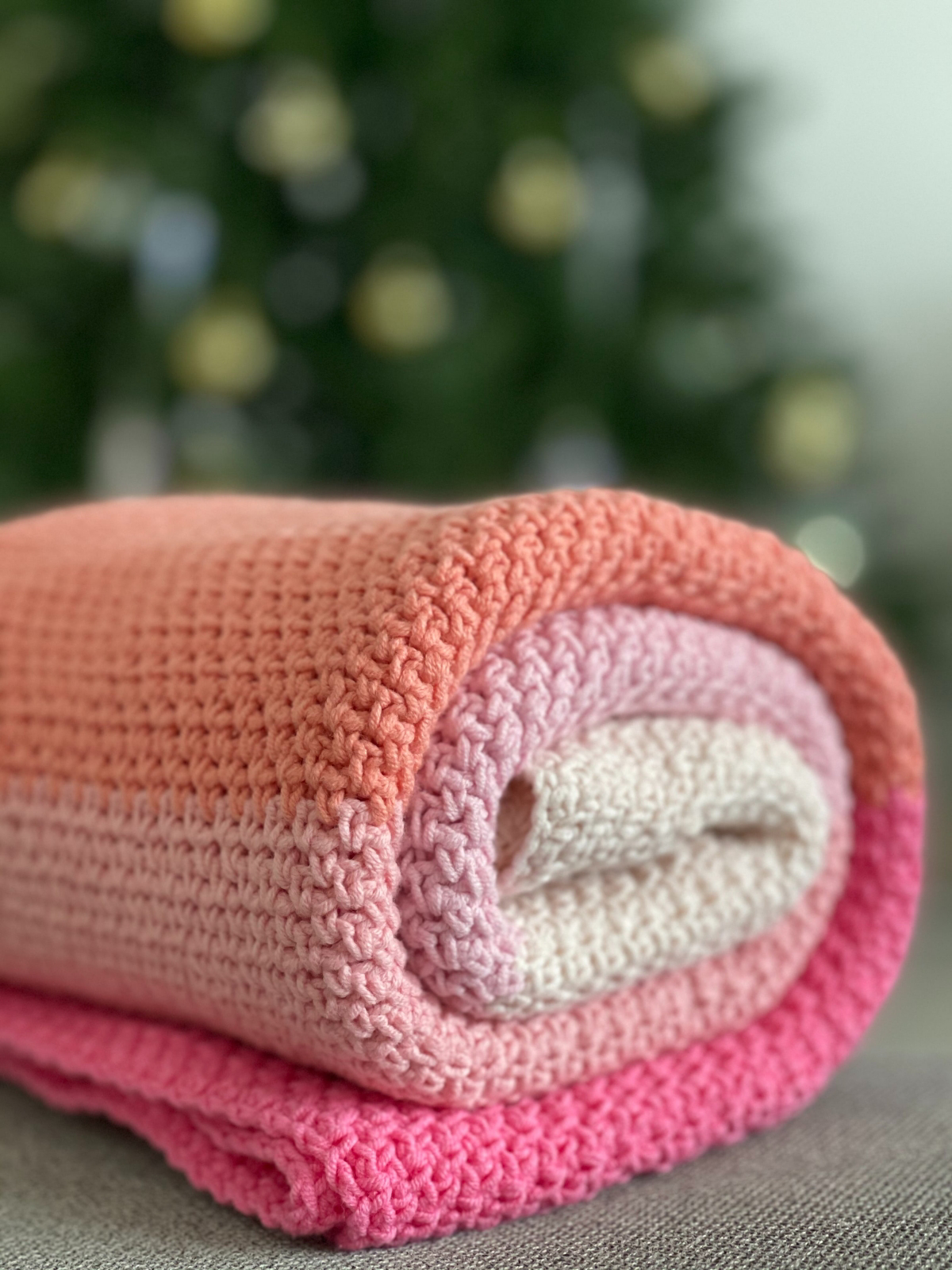
A Realistic DIY Budget
Let’s price out a standard throw blanket using good-quality Merino. If you need 8 pounds of roving at, say, $25 per pound, that’s $200 just for the wool. Add another $30 for a pair of giant needles. So, you’re looking at around $230 before you’ve even knitted a single stitch. It’s a project, for sure!
Beginner’s Shopping List
- Wool Roving (see our guide above for how much!)
- Giant Knitting Needles (optional, but recommended)
- A Fabric Shaver (around $15, you’ll thank me later)
- Wool-Safe Spot Cleaner (like Eucalan or another no-rinse wash)
- Patience (free, but required!)
Buying Smart: What to Look For in a Finished Blanket
If you’d rather buy than DIY, you need to be a savvy shopper. The quality out there varies wildly.
When you’re looking at a blanket, here’s a quick quality checklist:
- Stitch Uniformity: Are the stitches all roughly the same size? Some variation is normal in handmade items, but you shouldn’t see huge, gaping holes next to tiny, tight stitches.
- The Feel: Does it feel substantial and soft, with a pleasant weight? Or does it feel light and hollow? Low-quality synthetics often feel plasticky.
- The Joins: Look closely for where new balls of wool were added. Can you see or feel a hard knot? That’s a sign of rushed, low-quality work.
- The Finish: A well-made blanket is often lightly pre-felted by the maker. This helps lock the surface fibers in place to reduce shedding. If it looks excessively fuzzy and fibers are falling off just from a gentle touch, it hasn’t been finished properly and will be a nightmare to live with.
Oh yeah, and let’s talk cost. A large, handmade, 100% Merino wool blanket is an expensive item for a reason. Between the hundreds of dollars in raw materials and the 4-6 hours of skilled, physical labor, the price tag (often $300-$600+) reflects a serious investment. If you see a huge blanket advertised as “100% Merino” for a suspiciously low price, be very skeptical.
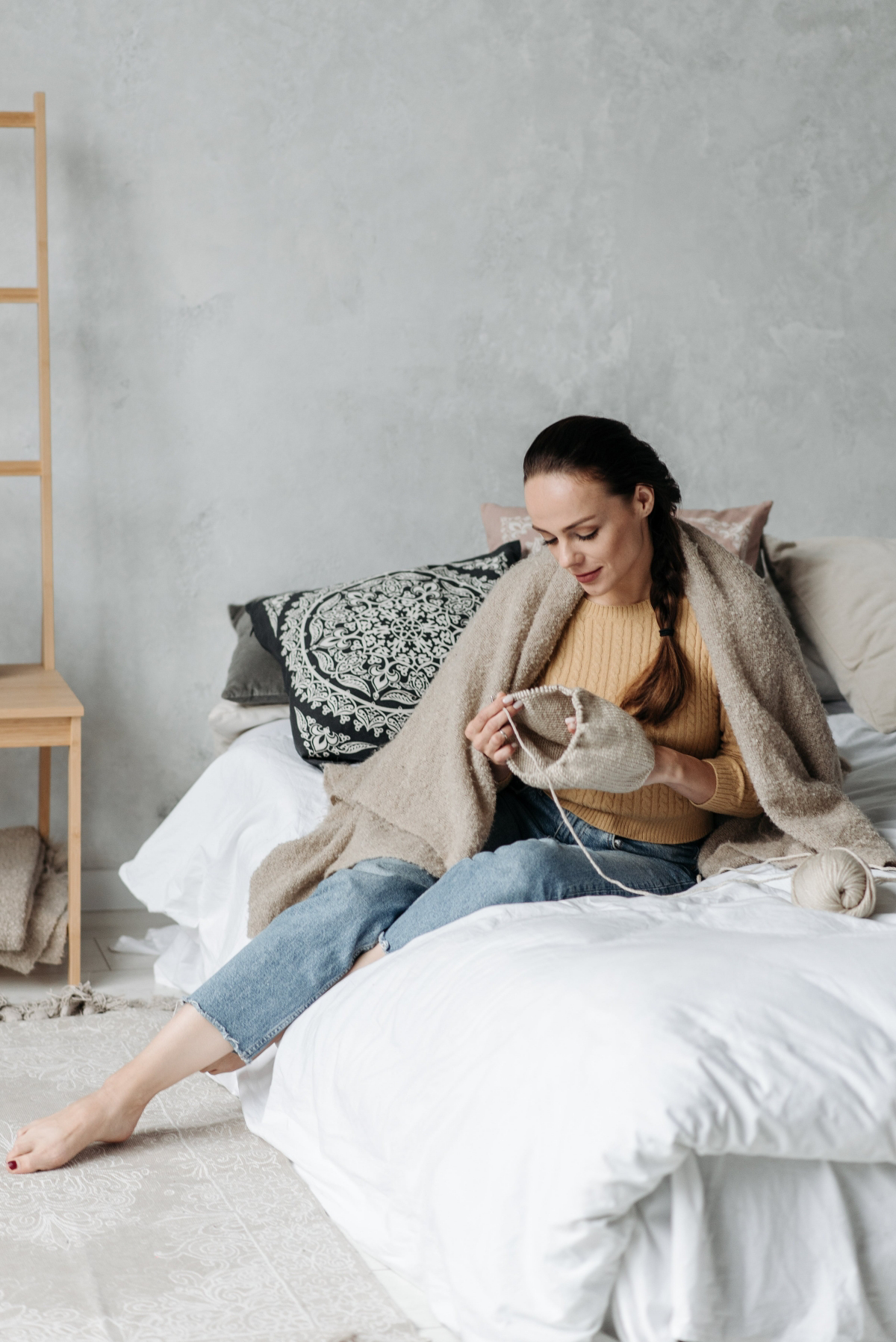
The Not-So-Fun Part: Care and Longevity
This is probably the most important section here. The unique way these blankets are made means they need very specific care. One wrong move can ruin it instantly.
The Pilling & Shedding Problem
Let’s be blunt: an unspun wool blanket will pill and shed. It is not a defect; it’s just the nature of using loose fibers. With friction, the short fibers on the surface will ball up. You can manage it by gently plucking the pills off by hand or carefully using a fabric shaver on the lowest setting. Just be incredibly gentle, or you can snag and pull out a whole chunk of roving.
How to Clean It (PLEASE READ THIS)
Heads up! DO NOT, under any circumstances, put a wool chunky knit blanket in a washing machine or dryer. I can’t stress this enough. The combination of water and agitation will turn your soft, fluffy blanket into a dense, stiff, shrunken mat. It’s an irreversible process called felting.
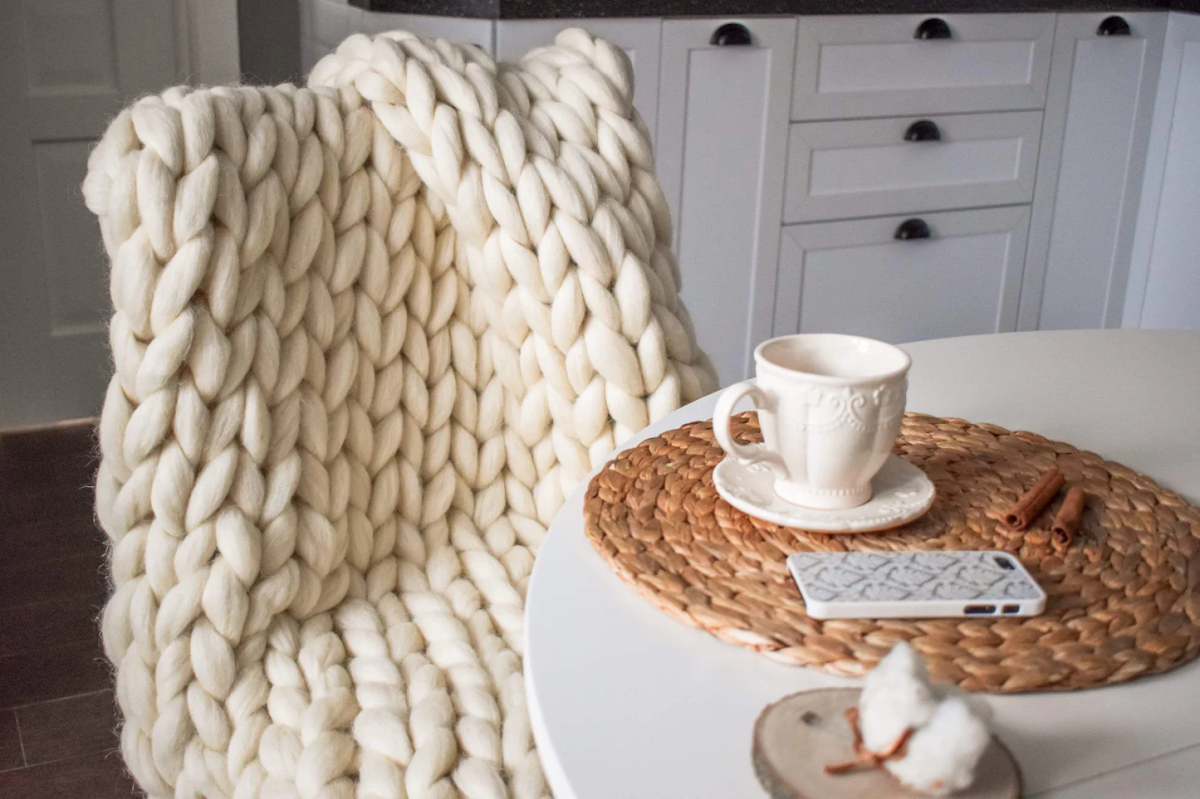
The first blanket I ever accidentally felted shrunk into something so stiff and small my cat wouldn’t even sit on it. I cried. That’s why I’m so intense about the ‘NO WASHING MACHINE’ rule!
- For small spills: Spot clean immediately. Use a clean cloth, a bit of cold water, and a drop of wool-safe detergent. Gently dab the spot—don’t rub! Rinse by dabbing with a cloth dampened with plain cold water and let it air dry flat.
- For a full clean: Your only safe option is a professional dry cleaner who has experience with delicate, unspun textiles. Ask them directly if they’ve handled this kind of item before. If they seem unsure, walk away and find a specialist.
Heads Up! Safety & Real-Life Considerations
A chunky knit blanket is gorgeous, but its open-loop structure isn’t right for every single household.
Homes with Small Kids and Pets
The big loops can be a potential entanglement risk for small children or babies. I strongly advise against using these in a crib or for unsupervised tummy time. They’re best as a decorative throw or for supervised couch snuggles.
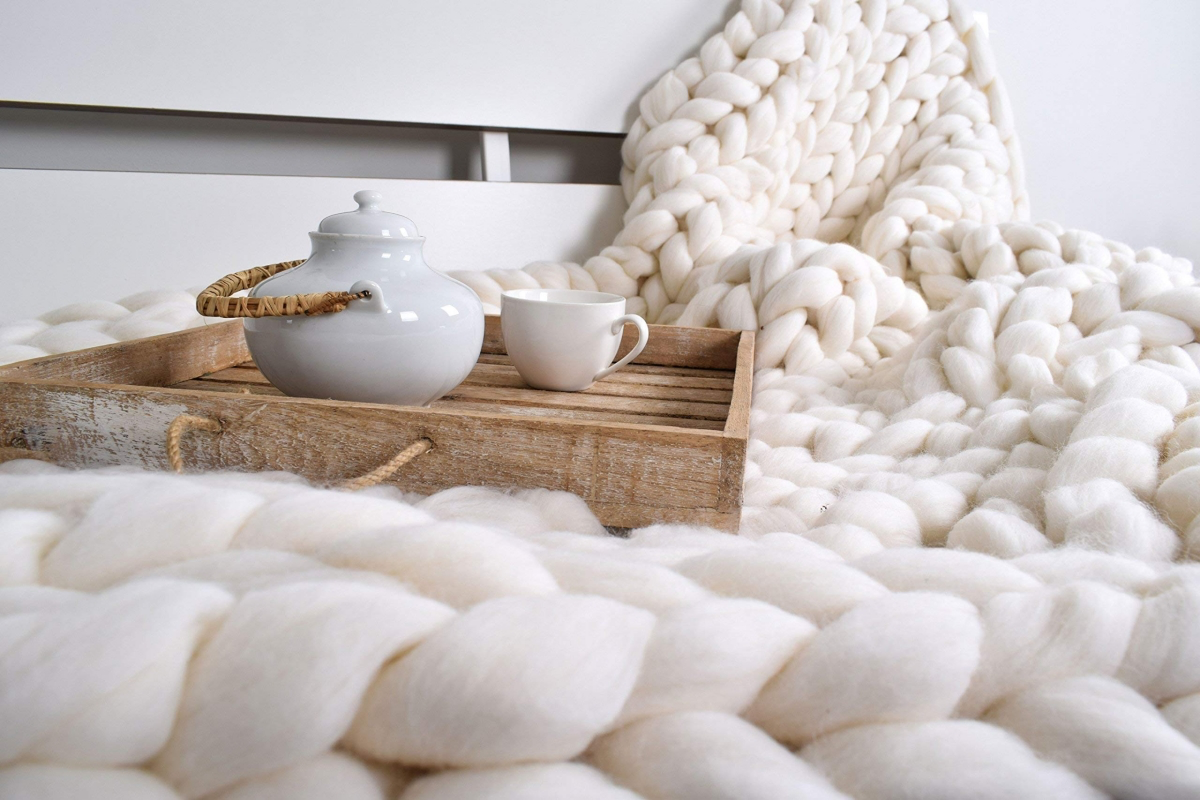
Pets, especially cats with their claws, can be an absolute disaster for these blankets. A single snag can pull out an entire strand of roving, ruining the look. If you have a cat that likes to knead, this is probably not the blanket for you.
Quick Tip: If you love the look but have pets, search for a “chunky knit tube yarn blanket.” This material is a cotton or polyester tube stuffed with filling, so it’s much more durable and washable, giving you the same vibe without the delicate-fiber anxiety.
Quick Troubleshooting Guide
- Problem: My stitches are wildly uneven!
Fix: You’re likely pulling the roving too tight or your tension is inconsistent. Try to keep the loops on the same part of your arm (e.g., always on your forearm, not drifting to your wrist) to help them stay the same size. Relax! - Problem: My edge is curling up.
Fix: Your cast-on row is too tight. I know it’s painful, but the only real fix is to pull it all out and start over. Cast on much, much looser than you think you need to.
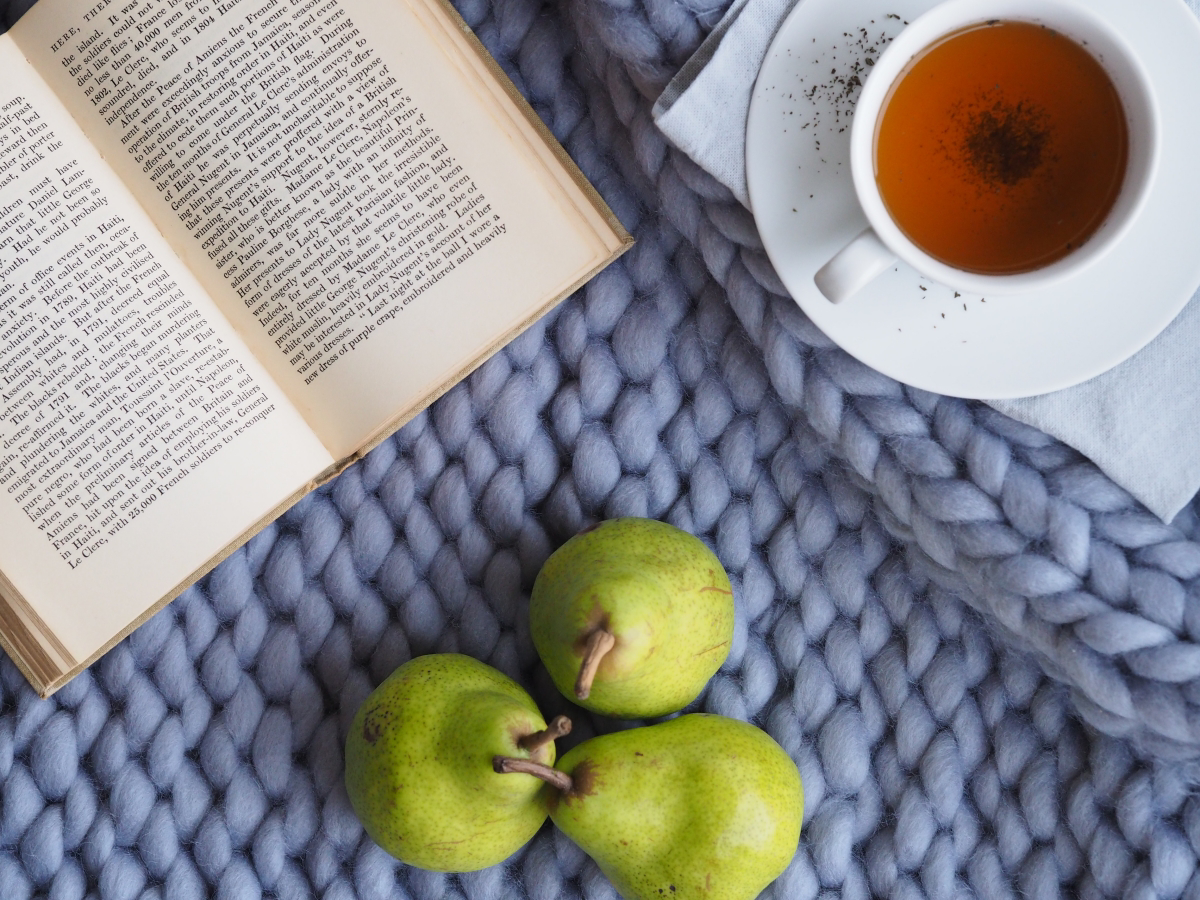
A Final Thought
A chunky knit blanket is a commitment. It’s not a disposable piece of decor; it’s a textile that demands a bit of your understanding and care. It’s a connection to an ancient fiber, brought to life with a modern, dramatic scale. Whether you buy one from a skilled artist or take the time to create your own, you’re bringing a unique object with incredible texture and presence into your home. If you treat it right, it’ll give you warmth and beauty for a very, very long time.
Galerie d’inspiration
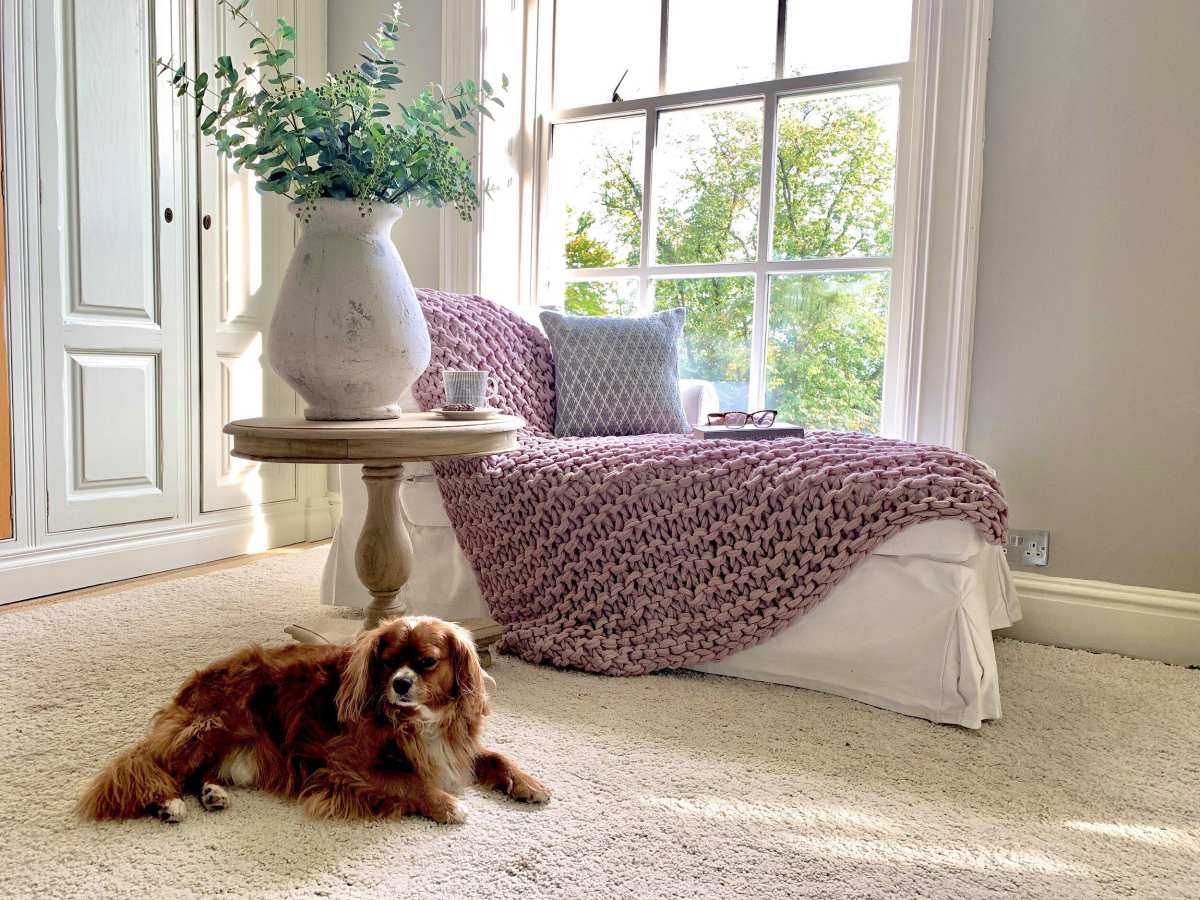

What’s the secret to styling a chunky knit without it looking like a messy pile?
It’s all about intentional placement. For a clean, architectural look, fold the blanket in thirds lengthwise and lay it neatly across the foot of your bed. For a more relaxed, inviting feel on a sofa, drape it over one arm, letting it cascade onto the seat cushion. The key is to treat it as a deliberate textural element, not an afterthought. Avoid placing it on a dining chair or entryway bench where it will be constantly moved and sat on, which accelerates wear and pilling.
Merino Wool: The ultimate in softness and luxury. Its fine fibers are incredibly warm and breathable, making it the top-tier choice. It is, however, delicate and prone to pilling if not handled with care, making it best for decorative use.
Tube Yarn: A fantastic, more durable alternative. This is essentially a cotton or polyester tube filled with soft poly-fil. It gives the same oversized look with significantly less shedding and can often be machine washed. Brands like BeCozi or Ohhio have popularized this modern option.










